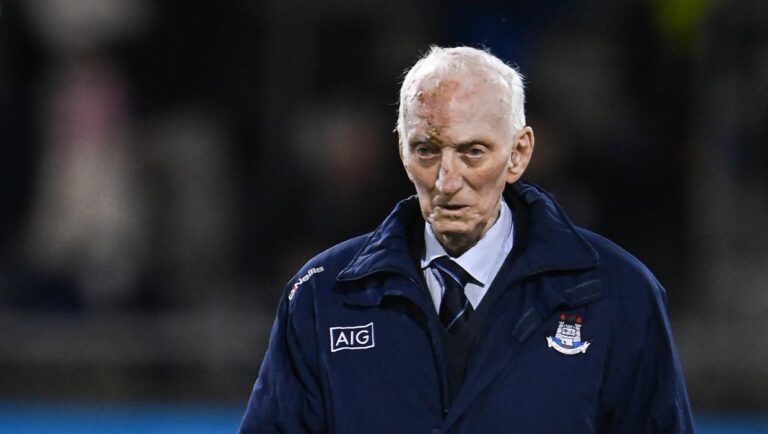[ad_1]
The way Jimmy Gray tells it, the split came about after a row over a recruitment policy. Founded predominantly by Tipperary people who had settled in Dublin, CJ Kickhams was the club of the drapers.
riginally, most of the GAA clubs in Dublin were institutionalised, linked to some degree or another to a particular profession or trade.
There was a team consisting mostly of grocers called Banba. There was Garda GAA and Civil Service. Erin’s Hope were comprised exclusively of student school teachers.
Guinness had their own team, made up of employees and their families that would later become St James’ Gaels.
Brendan Behan once observed that the first item on any Irish agenda is the split. For CJ Kickhams, it took 70 years to come about.
“Vincent’s had started producing their own players by cultivating an underage system,” said Gray. “We started the same practice for producing our own.
“There was a dispute about that. I won’t go into it because it was bitter at the time. A lot of things were said and done that shouldn’t have been. But we were advised to start Na Fianna. And we did.”
That was April 25, 1955. Gray was one of the 201 CJ Kickhams members to leave and form Na Fianna, initially using the one comically slanted pitch on Mobhi Road they still call home.
Twelve years later, Kickhams would merge with Ballymun Gaels to form Ballymun Kickhams.
Even today, the rivalry between the two is sparky around the disputed territory of Glasnevin.
On Sunday, Na Fianna contest a Dublin SFC final, their first since 2005. Next week, they’ll be back for the hurling decider. Heady days.
“All of those fellas are produced locally,” said Gray, as though reiterating the club’s initial mission statement.
“They came through the ranks. Through the nursery. They’re very young. It’s a great thing to see.
“It gives me great pleasure to go and watch them.”
The club have yet to win a Dublin senior hurling championship.
But underage success has them tracking in the right direction – and if motivation can be gleaned from heartache, they should be loudly revved up after last year’s final.
Gray, now 92, has watched Na Fianna mushroom from those initial 201 founders into one of the biggest GAA clubs in the country, numbering over 3,000 members and fielding more than 100 teams.
With, effectively, the same piece of land they started with, Na Fianna have absorbed the urban sprawl around Glasnevin and Drumcondra.
“It’s a huge club. A huge number of teams and a huge number of members. People wouldn’t understand that about some of the big clubs in Dublin.
“It takes such an effort to provide Gaelic games to so many people.”
They have survived the split. Levelled the slanted pitch, which once mirrored the steep gradient in Mobhi Road itself between Home Farm Road and the Tolka.
They even rose out of the ashes of an arson attack on their clubhouse.
“We were always anxious to get a base,” said Gray. “Our priority was to get a clubhouse. There was one for sale, an old cricket clubhouse. The Guinness Iveagh ground.”
In 1957, they acquired the wooden structure, consisting of a main hall with a stage, a tea room, a kitchen, a lounge, a library, a committee room, two dressing rooms and two bathrooms.
They dismantled it in its home in Crumlin and transported the materials to Mobhi Road.
Reconstruction work began in July. Members dug a 200-yard trench to take the main electricity cable. They laid floors and erected partitions. They installed partitions and decorated them. It was planned to open on a Sunday.
“On the Saturday night, a so-and-so went in,” Gray said. “He thought there was drink in it. There wasn’t. And he set it on fire.
“I went down at two o’clock in the morning. There was a big crowd from the club. If they had got their hands on yer man, he’d have gone up with the fire too.”
The existential threats didn’t end there.
In 2018, plans for the €3bn Metro Link project were revealed, which included a proposal to establish a major infrastructural construction site and an underground train station on Mobhi Road.
This would require the requisition for six years of Na Fianna GAA’s front pitch, its two all-weather pitches and lands used to access Scoil Mobhí and Scoil Chaitríona.
“I thought it was very nasty,” said Gray, who, during his 11-year stint as chairman of Dublin County Board, appointed Kevin Heffernan as the county’s senior football manager in 1973, setting in motion a chain of events that would change the GAA irrevocably.
“We weren’t prepared for it. The people who were backing the Metro, they hadn’t done their homework. There was lots of information they hadn’t a clue about. We had a marvellous committee that consisted of technical people.
“They defended our position. And we won eventually, thanks be to God. But it is quite a story,” Gray added.
“There were a lot of traumas and headaches that we had to come through down the years. But we overcame all the obstacles that came our way. And there were many.”
[ad_2]
Source link

